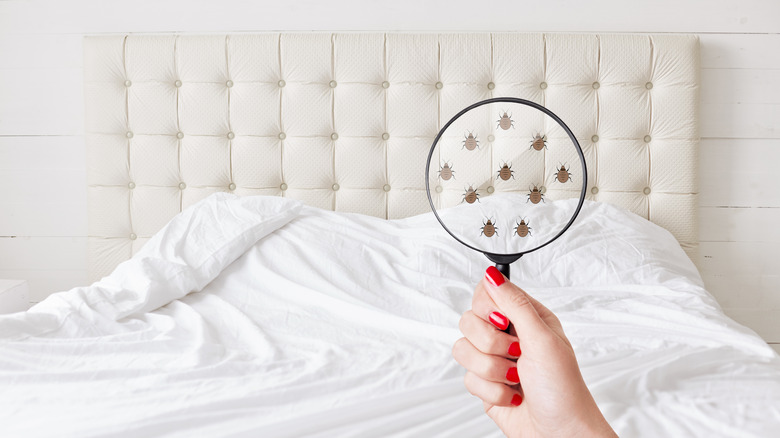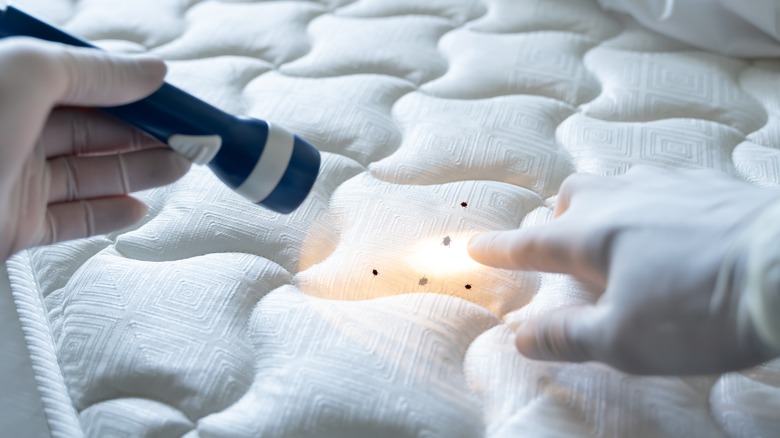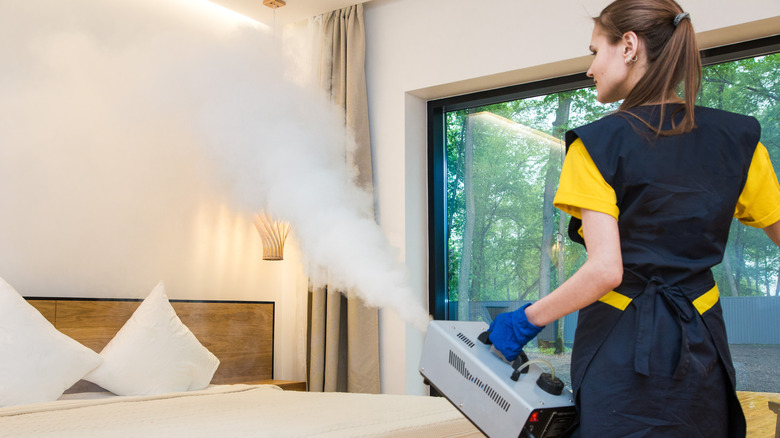The First Thing To Do If You Think You Have Bed Bugs
They can be contracted from places where you stay while on vacation and hitch a ride in your clothing as you travel home from your trip. Even visitors can unknowingly bring them into your house from out of town. Whatever the cause, we can all agree that dealing with bed bugs poses a challenge.
Unfortunately, just because you wake up in the middle of the night itching, or you notice some minor skin irritation, you can't assume that bed bugs are the culprits. Finding out what type of insect is bugging you helps when figuring out how to get rid of them. At the same time, finding and catching these bothersome insects is difficult to say the least, explains the Environmental Protection Agency (EPA), since they scatter quickly and tend to stay well hidden. You'll need to watch closely for other signs such as reddish discolorations on your furniture since bed bugs are parasites that feed on blood, or you may find the eggs or the outer coverings left by nymphs in the creases of your mattress or on your sheets.
Identify the bug
The first step you should take towards resolution, if you find any of these signs, is to determine whether the insect is indeed the bed bug in question. This step is important because another pest, the carpet beetle, closely resembles a bed bug when it's still in its early stages of life but doesn't respond to the same extermination process. As recommended by the EPA, you can catch one of the bugs, or collect the eggs or shells from nymphs, and seal them up in a clear plastic bag. From there, take the specimen to someone who is knowledgeable about insects. This might involve a professional exterminator who can identify the bug, or you can go to your community's extension office where an agent can determine what you're dealing with.
In the latter case, you may not have to pay a fee. Nonetheless, having a solid answer of whether you have bed bugs makes the rest of the extermination process easier since it involves specialized measures for getting rid of the pests before a more widespread infestation occurs.
Let the extermination begin
While there are several ways to get rid of bed bugs, you should first try to prevent a widespread infestation once you've established that bed bugs are the problem. This mitigation involves carefully removing your bedding and washing and drying it at a high temperature (per Scientific American). This measure might get rid of eggs and bugs alike, but remember not to set down the laundry on another chair or the floor between your bedroom and the utility room.
Considering that ridding your home of bed bugs takes more than one step, you might next call an exterminator who can safely perform a heating procedure (122 degrees Fahrenheit) in each room and apply a desiccant dust to crevices where the heat cannot reach. This may cause some inconvenience, considering the expense and that you'll likely have to leave the house while the exterminators do their work, but that's better than living with bed bugs. In the long run, this could be the best way to keep your home free of bed bugs.


